Understanding Pest Frogs: Ecological Insights and Management
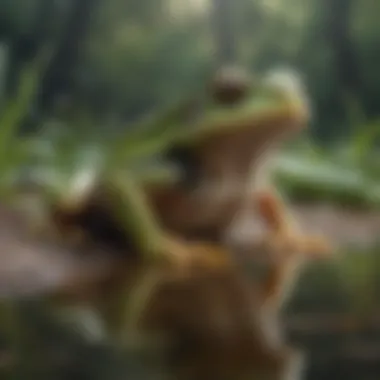
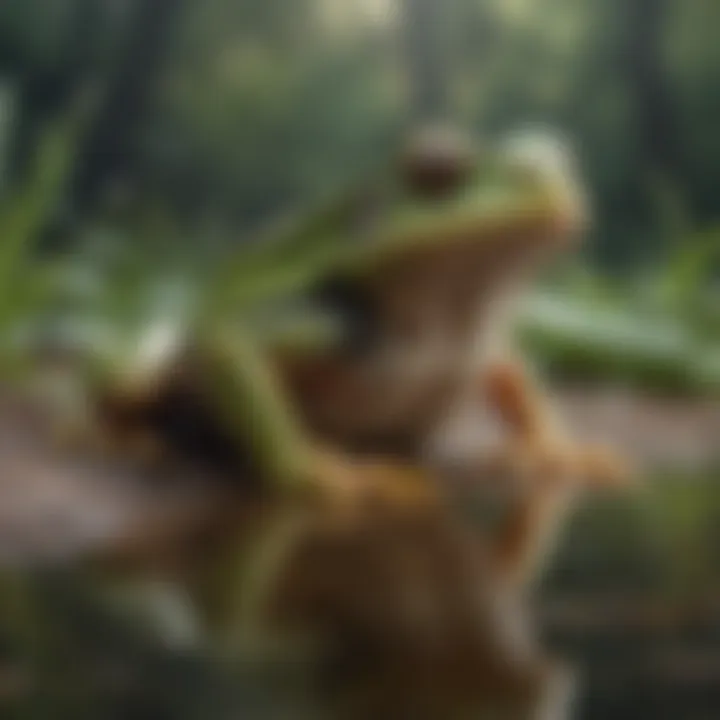
Intro
Frogs are often considered a charming part of the ecosystem, yet some species take on a different role and become pests. Understanding why certain frogs are categorized this way requires analysis of their behaviors, ecological impact, and the management strategies that can be employed. This article aims to explore the multifaceted world of pest frogs, equipping homeowners and housewives with the necessary knowledge to identify these species and manage their presence effectively.
Understanding Pests
Definition of Pests
In ecological terms, a pest is any creature that negatively impacts human interests, health, or the environment. For amphibians like frogs, certain species become pests due to their rapid reproduction, invasive nature, or the diseases they may carry. These pest frogs can disrupt local ecosystems, hinder agricultural productivity, and cause economic damage.
Importance of Pest Identification
Recognizing pest frogs is crucial for effective management. Not all frogs cause problems, and identifying specific species helps in developing targeted strategies. Additionally, understanding the unique characteristics of pest frogs can aid in determining their behavior and breeding patterns. Homeowners should familiarize themselves with common pest frog species in their area to prevent potential issues.
Prevention Techniques
Home and Garden Preventative Measures
Preventing pest frogs from becoming a problem starts at home. Here are some strategies:
- Remove standing water: Frogs breed in stagnant water, so eliminating water sources around your yard can reduce their numbers.
- Maintain a tidy garden: Keeping gardens well-groomed minimizes hiding spots that attract frogs.
- Install barriers: Physical barriers, such as fencing or mesh, can deter frogs from entering specific areas.
Seasonal Prevention Tips
Timing plays a significant role in pest control. During breeding seasons, pest numbers can soar. Here are some seasonal tips:
- Spring: Monitor for signs of frogs and take early action by checking for standing water in pots and gutters.
- Summer: Inspect your garden frequently as frogs are active during warmer months. It’s a good time to utilize barriers and preventative measures.
Eco-Friendly Pest Control Solutions
Overview of Sustainable Practices
Using eco-friendly pest control methods is beneficial for both the environment and household safety. These methods limit chemical use, protect local wildlife, and ensure that the ecosystem remains balanced. Here are some sustainable practices:
- Encourage natural predators: Birds and snakes can naturally keep pest frog populations in check.
- Use non-toxic repellents: These can deter frogs without harming them or other beneficial creatures.
Natural Remedies and Their Effectiveness
Natural remedies can effectively manage pest frogs without chemical interventions. Some suggested methods include:
- Vinegar and water spray: A mixture can deter frogs when sprayed in areas they frequent.
- Salt barriers: Salt can prevent frogs from crossing certain areas, but use caution as it can affect plants and soil.
"Understanding and managing pest frogs requires knowledge of their behavior and effective strategies to keep them at bay."
By understanding pest frogs, homeowners can take proactive measures to protect their gardens and homes while maintaining harmony in the ecosystem.
Prelude to Pest Frogs
Pest frogs represent a unique phenomenon within the realm of amphibian ecology. These species are often categorized as pests due to their adverse effects on local ecosystems, agriculture, and even human health. Understanding pest frogs is vital for several reasons. First, it enables homeowners and gardeners to recognize and mitigate potential pest populations in their environments. In this sense, knowledge becomes both a protective and proactive tool against ecological imbalances.
Recognizing pest frogs involves identifying specific species that possess harmful traits or invasive tendencies. This identification is crucial as it can impact local wildlife and plant communities. By understanding these amphibians, house owners can learn effective management strategies, thus maintaining the ecological integrity of their properties.
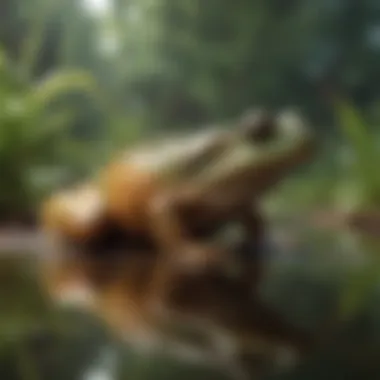
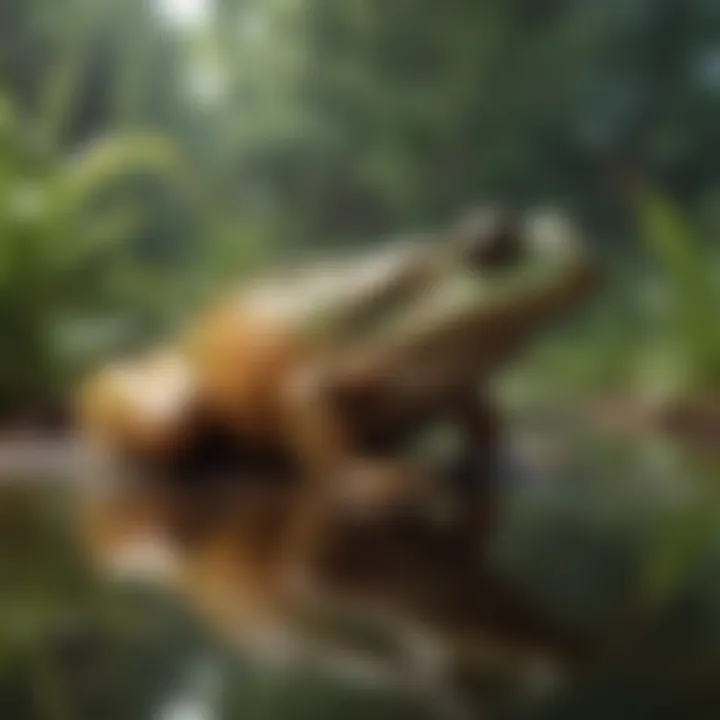
Another significant aspect of pest frogs is their historical context, which sheds light on their roles over time and how human activity has shaped their presence in various regions. Understanding both the ecology and historical trends provides insights into successful management techniques, helping to balance local ecosystems without resorting to harmful practices.
Defining Pest Frogs
Pest frogs are generally defined as species that exhibit invasive behavior or cause disruption in their habitats. This includes frogs whose populations grow uncontrollably, leading to competition with native species. The classification often varies by region, as certain species can be considered pests in one area while playing essential roles in another. For instance, some frogs that thrive in gardens may consume beneficial insects but can also alter the native species dynamics, creating ecological pressure.
Recognizing these traits is essential for house owners, as it equips them with the knowledge to manage their gardens effectively. Pest frog identification often relies on a range of factors including size, color, sound, and breeding habits.
Historical Context
The historical context of pest frogs provides insight into how these species evolved in specific environments and their interactions with human beings. Frogs have long been a part of agricultural landscapes, often valued for their role in controlling insect populations. However, with increased global movement and trade, many native frog species faced competition from introduced pest frogs.
Understanding this historical background emphasizes the importance of local biodiversity and the delicate balance within ecosystems. As communities grow and cities expand, the evolution of pest frog populations and their impact on native species become more pronounced. Thus, this examination allows individuals to appreciate the complexity of ecological systems and the lasting impact humans can have on them.
Ecological Role of Frogs
The ecological role of frogs is substantial and multifaceted, particularly when considering the presence of pest frogs. Understanding this role helps to highlight how these amphibians contribute to the ecosystems they inhabit. Pest frogs can disrupt the balance within their environments, and studying their contributions can provide insight into management strategies. By examining their impacts on native species and overall ecosystem health, we can better understand the economic and environmental challenges that arise with their presence.
Frogs in Ecosystems
Ecosystem Services
Frogs offer numerous ecosystem services that significantly benefit the environment. They serve as both predators and prey, maintaining the balance within food webs. Pest frogs, while sometimes disruptive, can still contribute to certain ecosystem functions. For example, their role as insectivores can help reduce pest populations naturally. This can mitigate the necessity for chemical pesticides, which have their own set of environmental impacts.
A key characteristic of these ecosystem services is their natural regulatory function. The unique feature of frogs lies in their sensitivity to environmental changes, which makes them effective indicators of ecosystem health. However, the presence of pest frogs can skew this balance and complicate assessments, leading to challenges in conservation goals and management practices.
Food Web Dynamics
Food web dynamics illustrate the interconnectedness of organisms within an ecosystem. Frogs inhabit various levels of these webs, acting as a vital link between predators and prey. When managing pest frogs, it’s essential to recognize their role in these dynamics. They can influence the populations of insects and other small invertebrates, thereby indirectly affecting plant life through herbivore control.
The critical aspect of food web dynamics is the impact of removing or reducing pest frog populations. Such actions can lead to an imbalance, as other species thrive without their natural predators. This change can have widespread repercussions on the ecosystem’s stability. Therefore, understanding food web dynamics is crucial in developing sustainable pest management strategies.
Benefits of Frog Populations
Natural Pest Control
One of the most impactful benefits of frog populations is their role in natural pest control. Frogs consume a variety of insects, aiding in the management of pest species in gardens and agricultural settings. This consumption not only provides a healthier environment but also reduces reliance on artificial pesticides, which can pose risks to both health and ecosystems.
The significant feature of natural pest control from frog populations lies in their ability to adapt to various food sources. This adaptability allows them to thrive in diverse habitats, providing a consistent form of pest management. Nevertheless, the introduction of pest frog species can alter this positive aspect, leading to increased competition for food resources and potential disruptions in local insect populations.
Biodiversity Indicators
Frogs serve as indicators of biodiversity within ecosystems. The health of frog populations often reflects that of the local environment. In areas where frogs flourish, it is typically a sign that the ecosystem is balanced and healthy. Conversely, declines in frog populations can indicate environmental distress or habitat degradation.
The unique feature of using frogs as biodiversity indicators is their sensitivity to pollutants and habitat changes. This sensitivity can lead to early detection of environmental issues, which is invaluable for conservation efforts. However, pest frog species may complicate these assessments, potentially overshadowing the health indicators provided by native frogs. This situation highlights the importance of distinguishing between beneficial frog populations and invasive pest species in biodiversity studies.
Identifying Pest Frogs
Identifying pest frogs is a crucial part of understanding their impact on ecosystems and human interactions. Clear identification helps in managing these species effectively. Knowing the differences between pest frogs and other frogs enables better decision-making. This can lead to improved ecological outcomes and enhanced pest management strategies.
Common Pest Frog Species
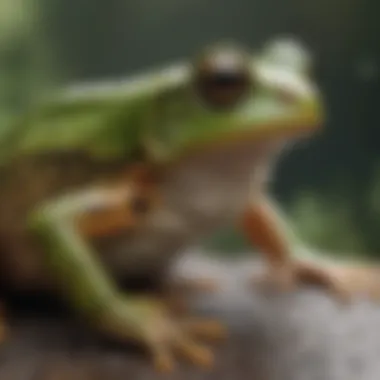
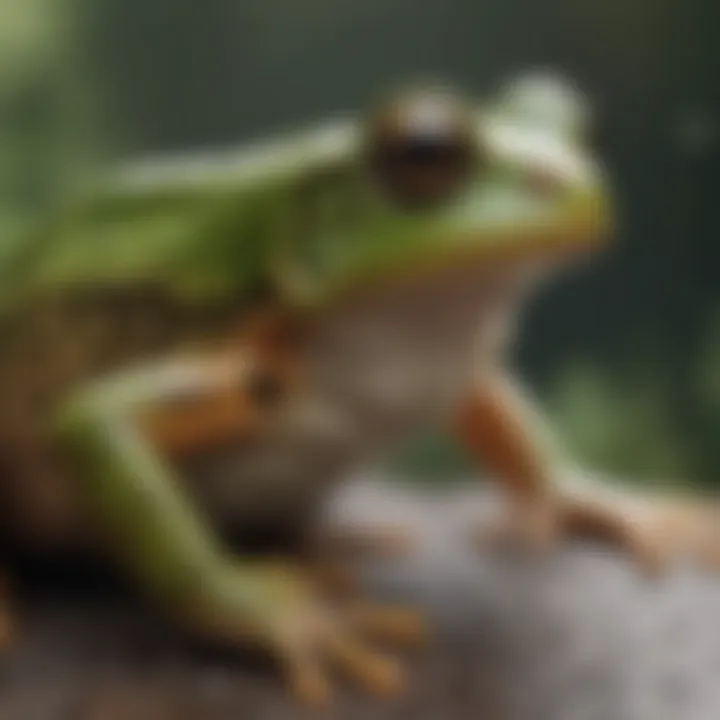
Toxic Frogs
Toxic frogs possess a unique feature that sets them apart. Their skins produce harmful toxins which can deter predators. This characteristic can serve as a defense mechanism. However, in some environments where such frogs thrive, they can disrupt the local ecosystem. These frogs, such as the Corythomantis greeningi, provide valuable insights into the effects of toxicity within habitats.
The advantage of recognizing toxic frogs lies in understanding their role. Pest control measures often focus on these species, as their toxins can affect other wildlife. Yet, understanding their ecology is key. Ignoring their role may lead to unforeseen consequences in pest management efforts.
Invading Species
Invading frog species pose a significant threat to local wildlife. These species, such as the Rana catesbeiana or the bullfrog, often compete with native frogs for resources. Highlighting the fact that invading species can rapidly establish populations helps in understanding their growing influence. Their adaptability makes them formidable competitors in various ecosystems.
The unique feature of invading species is their rapid reproduction. They can breed prolifically, leading to population explosions that native species cannot match. The consequence of this can be a decrease in biodiversity. Managing these invasions is vital. Employing strategies to control their numbers benefits native species and preserves ecological balance.
Behavioral Characteristics
Breeding Patterns
Breeding patterns of pest frogs hold essential information about their population dynamics. Many pest frogs have specific breeding seasons that coincide with environmental changes. Understanding these patterns is crucial for effective management strategies. For instance, identifying when these frogs breed helps in implementing prevention measures to deter them effectively.
A key characteristic of these breeding patterns is their reliance on specific habitats. Many species require water bodies for successful mating. This insight is beneficial. By controlling access to these habitats, the spread of pest frogs can be reduced.
Feeding Habits
Feeding habits of pest frogs offer further insights into their ecological roles. Many pest frogs are opportunistic feeders and consume a variety of prey. This characteristic aids their survival but also highlights competition with other local species. Recognizing what these frogs typically eat illustrates their impact on food webs in their environments.
The benefit of understanding feeding habits is twofold. It aids in creating management strategies that consider ecological balance. Moreover, it can inform about possible methods to deter them. For instance, adjusting food availability in certain areas could control their populations more efficiently.
Environmental Impact of Pest Frogs
The topic of environmental impact from pest frogs is significant as it outlines how these species affect native flora and fauna. Understanding this impact is crucial for developing effective management strategies. Pest frogs can disrupt local ecosystems, leading to imbalance and loss of native species. Furthermore, their presence can have long-term effects on biodiversity. It is essential to examine these impacts critically, especially for homeowners concerned about ecological health and sustainability in their gardens and surrounding areas.
Impact on Native Species
Pest frogs can significantly influence native species in several ways. They may compete for food resources, habitat, and breeding sites. If they establish a presence in a new environment, they could outcompete local frogs for resources. This competition often leads to a decline in native frog populations. Native frogs typically evolved alongside their ecosystems and have adapted to specific ecological roles. When pest frogs invade, they may alter these roles and disrupt the natural balance.
Additionally, some species of pest frogs are known carriers of diseases. Their introduction could enhance the spread of pathogens that native species have never encountered before. For example, the Chytrid fungus, often linked to frog declines worldwide, can originated from pest species and impact local populations extensively. This can create a domino effect, harming entire ecosystems.
Changes in Ecosystem Balance
The introduction of pest frogs can lead to significant changes in ecosystem balance. An influx of these species often leads to an increased predation rate on other organisms, such as insects and small aquatic life. Consequently, this rise in predation can cause shifts in population dynamics, reducing certain species and allowing others to proliferate unnaturally.
Moreover, pest frogs might alter the nutrient cycles within their adopted habitats. As their feeding habits and reproductive cycles differ from native frogs, this could change how nutrients are distributed in soil and water systems.
"The ecological balance is delicate, and the introduction of an invasive species like pest frogs is often a precursor to unexpected environmental changes."
Understanding these changes is essential, particularly for homeowners and gardeners who rely on maintaining a balanced environment. Be it through pollination or natural pest control, the contributions of native frogs are critical. The loss of these species, alongside the introduction of pest frogs, can reduce the overall health of local ecosystems.
Management Strategies
The management of pest frogs is crucial for maintaining the balance in ecosystems. These strategies not only address the issues caused by invasive frog species but also ensure that native wildlife can thrive. Effective management demands a comprehensive approach that encompasses monitoring, control measures, and the consideration of ecological impacts.
Monitoring and Surveillance
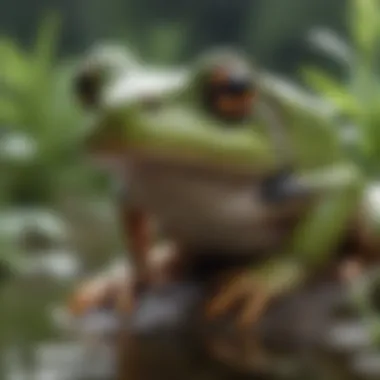
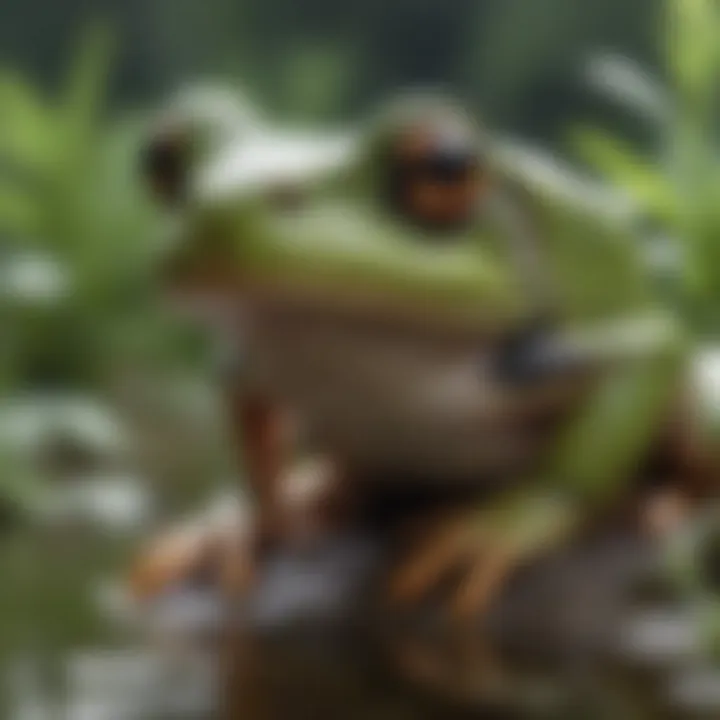
Monitoring and surveillance are essential components of any management strategy for pest frogs. Collecting data on frog populations helps identify the presence of invasive species and track their movements. This information is vital to understand their impact on native species and ecosystems. Regular surveys can determine population density and distribution. Simple methods like visual inspections, audio recordings of frog calls, or deploying specialized traps can provide valuable insights. For house owners, understanding when and where pest frogs are becoming a problem ensures timely intervention.
Control Measures
Control measures entail various methods to manage pest frog populations effectively. These methods can be broadly categorized into chemical control, biological control, and physical exclusion.
Chemical Control
Chemical control involves using pesticides and herbicides to diminish frog populations. These chemicals can be effective, especially in severe infestations. One characteristic of chemical control is its ability to deliver quick results. However, its use must be approached cautiously. Residual effects can harm non-target species, including beneficial frogs. When considering this method, it's important to evaluate both the effectiveness and potential environmental repercussions.
Biological Control
Biological control utilizes natural predators or competitors to manage pest frog populations. This method can be a sustainable alternative to chemical solutions. One key aspect is that it encourages using organisms that naturally prey on or outcompete the invasive species. The advantage is that this method can lead to long-term population control without the harmful side effects of chemicals. Nevertheless, it requires careful planning to avoid unintended consequences in the ecosystem.
Physical Exclusion
Physical exclusion methods involve using barriers to prevent pest frogs from entering specific areas. Techniques can include fencing or netting that effectively block frogs from particular habitats. This strategy is often highly effective, particularly in controlling access to gardens or residential areas. The main advantage of physical exclusion is that it is environmentally safe, posing no chemical risks. However, it can require significant investment in time and resources to implement properly and ensure long-lasting effectiveness.
In managing pest frogs, the combination of monitoring, a range of control measures, and physical exclusion techniques offers a holistic approach to safeguard ecosystems.
By integrating these management strategies, homeowners and conservationists can ensure that pest frog populations are kept under control while minimizing impact on the natural ecosystem.
Legal and Ethical Considerations
Legal and ethical considerations play a crucial role in managing pest frogs effectively. These aspects not only guide the implementation of pest control methods but also ensure that actions taken are responsible and sustainable. Understanding the boundaries of law and ethics helps to balance human needs with the intrinsic rights of wildlife.
An increasing number of regions recognize the ecological significance of various frog species. Thus, regulations that govern pest control must be well-informed and precise. Homeowners and communities must have knowledge of the legal frameworks surrounding frog management. Without understanding these regulations, there is a risk of inadvertently harming non-target species or disrupting local ecosystems.
When addressing legal aspects, it is essential to look at specific regulations that pertain to pest frogs. This includes both federal and state laws that dictate how pest control should be conducted, ensuring that it is done with respect to conservation laws and species protection.
Regulations on Pest Control
Pest control regulations vary across different regions and are crucial in defining what measures can be effectively implemented. For instance, the U.S. Environmental Protection Agency enforces federal laws related to pesticides, which includes considerations on non-target organisms like frogs.
Homeowners must check their local regulations, as some areas may prohibit certain chemical controls. Additionally, some frog species may be protected under state laws or listed as threatened or endangered. Violations can lead to severe penalties, which include fines or litigation.
To illustrate, if using a pesticide, homeowners should ensure that it is registered and reviewed by relevant authorities. Understanding these legal parameters can help avoid problems and make pest management efforts more effective.
Ethical Treatments of Pest Species
Ethically treating pest species involves understanding and respecting the ecological roles they play. While some frogs might be categorized as pests due to their invasive nature or overwhelming populations, it is important to remember their contribution to biodiversity. Therefore, humane treatment methods are generally preferred over more aggressive approaches.
Using integrated pest management is one ethical approach. This method focuses on long-term prevention and relies on a combination of practices, such as:
- Habitat modification
- Mechanical controls, like trapping
- Biological controls, involving natural predators
A key focus is reducing reliance on chemical pesticides, which can lead to unintended consequences for the ecosystem. Thus, ethically managing pest frogs ensures minimal disturbance to local wildlife and environments. In sum, a measured understanding and application of legal and ethical considerations help ensure that pest frog management not only protects human interests but also preserves nature's balance.
Understanding these frameworks reinforces the need for responsible pest management, ultimately championing both human and ecological well-being.
The End and Future Considerations
Understanding pest frogs is more than an academic exercise; it holds significant relevance for both environmental sustainability and economic health. This section emphasizes how knowledge about pest frogs contributes to effective ecosystem management and the preservation of native species. Pest frogs often disrupt local biodiversity, making it vital for homeowners and environmental enthusiasts to grasp their impact fully. By considering the nuances associated with these species, stakeholders can develop informed strategies that balance natural ecosystems with homeowner interests.
Summary of Key Insights
The exploration of pest frogs leads to several key insights that shape our understanding. Firstly, pest frogs can drastically alter their habitats, influencing native populations and interspecies dynamics. Recognizing the species most likely to invade and cause disruption aids in proactive management. Homeowners can benefit from being aware of behavioral patterns and potential ecological consequences related to pest frogs in their gardens.
- Distinction of species: Not every frog is a pest. Understanding the characteristics of harmful species is essential.
- Behavioral habits: Learning feeding habits and breeding patterns can inform effective management.



